Grab Malaysia revives its carpool service under a new name, available in selected areas only

Grab Malaysia just announced in a press release today that they’ll be piloting a carpooling service called JustSave. Starting May 29, 2023, it will only be available in selected locations in the Klang Valley.
Through the service, customers will be able to carpool with another passenger that’s heading in the same direction or route.
In the press release, Grab stated that JustSave fares will be slightly more affordable than its regular e-hailing service. On average, it claims customers will save up to 20% when they share a ride.
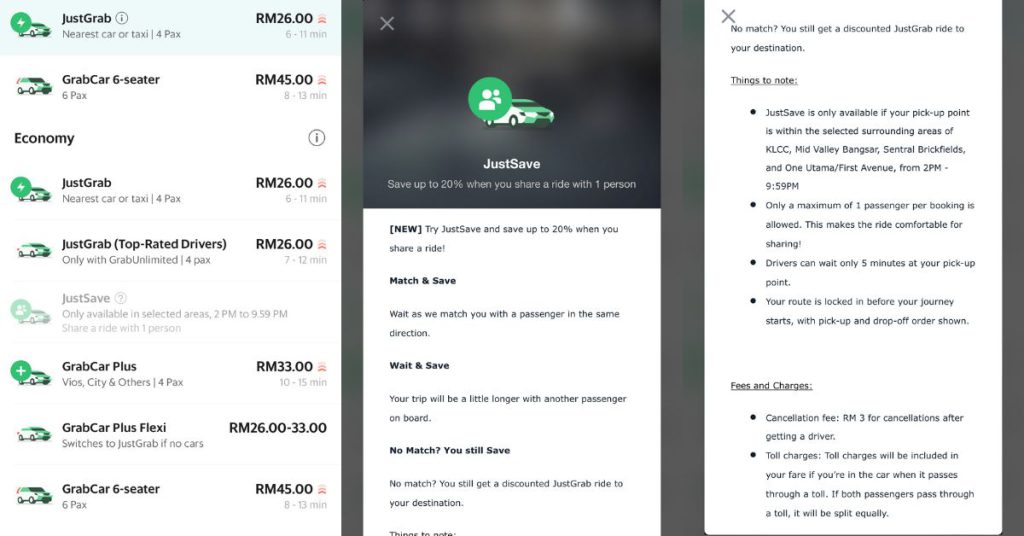
On the other hand, it gives driver-partners another option to improve their earnings per minute by serving multiple bookings at once. These bookings will have to be taking the same route or be headed towards similar destinations.
As part of the piloting exercise, JustSave will only be rolled out in several areas within the Klang Valley. Currently, it’s concentrated in high-traffic areas with high matching possibilities.
For now, this is limited to KLCC, Mid Valley Bangsar, Sentral Brickfields, and One Utama/First Avenue. The service will also be available specifically from 2PM until 9:59PM only.
How it works is Grab users can book a JustSave ride to their location of choice (provided it’s within the service area). Once done, Grab will look for another passenger that’s going to the same drop-off point or another location that’s in the same direction.

However, do note that you can only book a JustSave ride for yourself as there’s a maximum of 1 pax per booking, and a maximum of 2 pax for a JustSave ride (you and the other carpooler). So if you’re planning to go somewhere with a friend for cheaper, JustSave is not the option for you.
There might be occasions when customers may not be able to find another passenger to carpool with. In such cases, users can still use JustSave, but instead of the usual discount, they will be given an RM1 discount (at the time of writing) on the price of a regular JustGrab ride.
Should a passenger cancel a JustSave ride while the e-hailing service’s driver-partner is on the way, they will have to pay a cancellation fee of RM3. This amount will be pocketed in full by the driver-partner to compensate for the time and effort lost.
Grab reassured that the remaining passenger’s booking will not be affected and will proceed as booked.

We’ve not yet tested this feature for ourselves, but we wondered, is JustSave actually that much cheaper of an option?
Let’s say a stranger and I are lining up for a Grab at Mid Valley. I want to go to Pavilion while they want to go to KLCC.
If we both match for a JustSave, from what we checked, it would cost RM26 for the KLCC trip, and RM21 for the Pavilion trip. That comes up to a total of RM47 between the both of us.
However, if I had just asked that stranger to share a Grab with me while I add a stop for KLCC, it would only be RM39 split between the two of us.
Granted, you’d have to make that awkward conversation with strangers first, which JustSave, well, saves you the trouble of doing.
Based on past records, JustSave is not the first carpooling service offered by Grab. The brand previously introduced a carpooling service called GrabShare in 2017, and it appeared to work largely the same.
However, the feature was removed from the e-hailing platform in 2019 “for improvement purposes”. Looking at GrabShare’s details, it seems like JustSave might be the long-awaited update.
- Read articles we’ve written about Malaysian startups here.
Also Read: When not cooking at a Michelin-starred spot, this M’sian is designing Japanese chef knives
Featured Image Credit: Vulcan Post
S’pore startup UglyFood called it quits due to lack of funding – now back in biz after 4 months
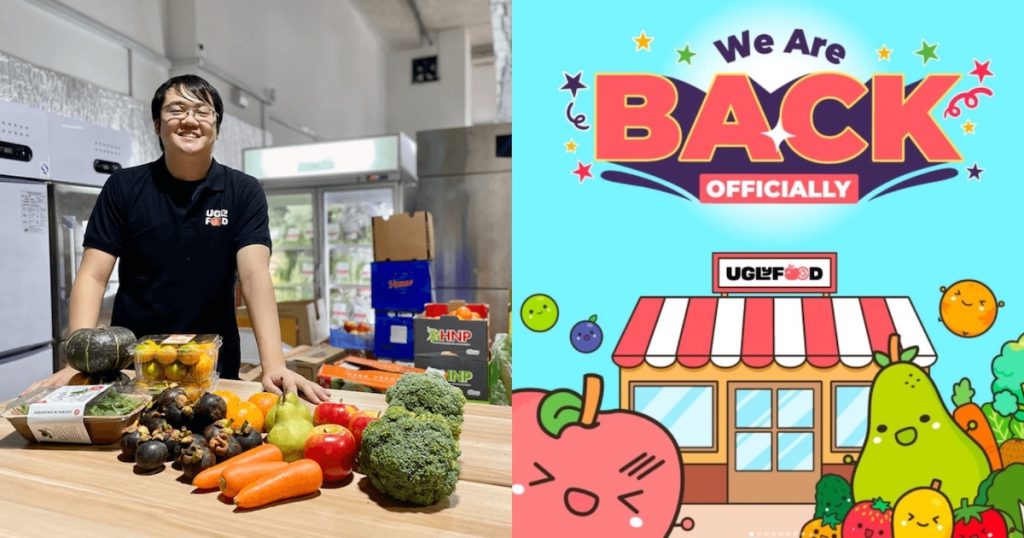
Earlier on January 4 this year, homegrown food waste startup UglyFood abruptly announced its closure. In a lengthy LinkedIn post, co-founder Sean Goh revealed that the company was unfortunately unable to raise the funds it needed to continue its operations.
The startup has underwent a significant transformation since it was founded in early 2021 by Sean and fellow co-founder Augustine Tan.
Their vision was to tackle the pressing issue of food wastage, which led to the creation of UglyFood. The startup not only sells surplus or ‘ugly’ produce, but also offers its own branded products and responsibly sourced goods, all with the goal of promoting sustainability.
Prior to this, Augustine and Yao Pei Shan were at the helm of the company. However, Pei Shan left the company to start up FoodWarrior in February 2021, a platform that aims to educate Singaporeans on food sustainability. In its earlier stages, it explored different product lines such as selling juices, ice cream, and fruit tea.
This departure prompted the transition in leadership, as Sean and Augustine took charge of UglyFood and steered it in a new direction.
The closure of UglyFood earlier this year came as a shock to many, with many of them expressing their sadness and disappointment over the news on its social media channels. Over the years, the platform had amassed a following of over 28,000 on Instagram and almost 13,000 subscribers on Telegram (as of writing).
Just when it seemed like it was the end of the road for the food waste startup, UglyFood announced a surprise comeback on May 10. In an interview with remaining founder Augustine, he shared about the factors that led to both the decline and subsequent revival of UglyFood.
What led to the fall of UglyFood?
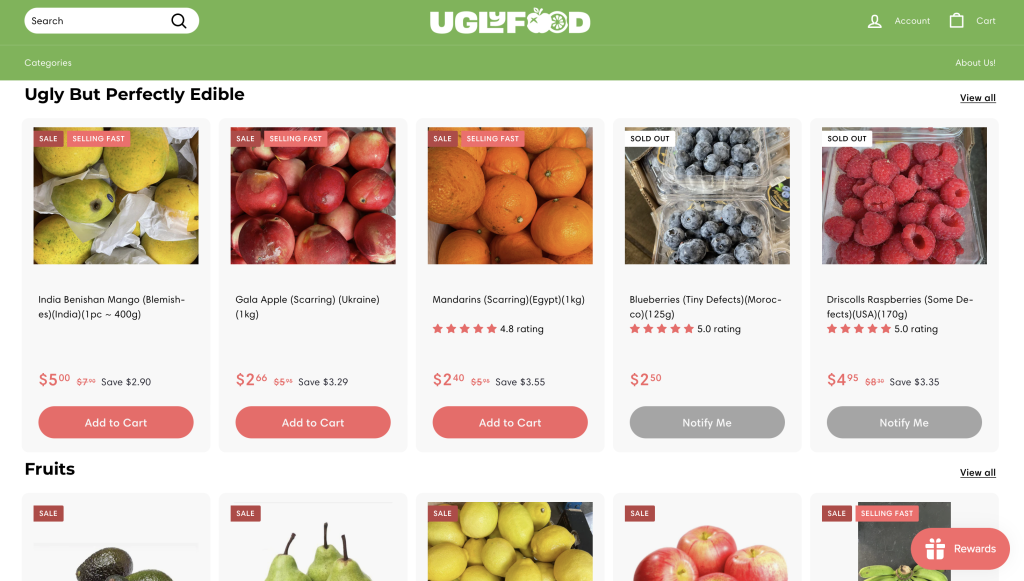
According to Augustine, a combination of various factors led to the business’ demise back in January. These include challenges in warehousing, logistics, food storage and last-mile delivery — all of which drove up costs and rendered the business unsustainable in the long term.
Furthermore, the rigorous quality checks conducted by the business posed another substantial cost burden for UglyFood. As the business specialised in selling blemished produce, they had to conduct thorough inspections to guarantee the safety and edibility of the goods.
Although the company previously raised US$120,000 funding in a pre-seed round, the only way for UglyFood to sustain its business at that time was to raise more funds, considering the high costs of running the startup.
Regrettably, the company’s inability to secure additional funding proved to be the fatal blow, resulting in the unfortunate closure of the business.
Our operations were basically overextended. We required funds to sustain the infrastructure of the business itself, and much more to grow. [UglyFood’s] failure to raise funds definitely impacted us a lot and changed the trajectory of the business.
– Augustine Tan, founder of UglyFood
UglyFood 2.0: The relaunch of the e-grocery platform
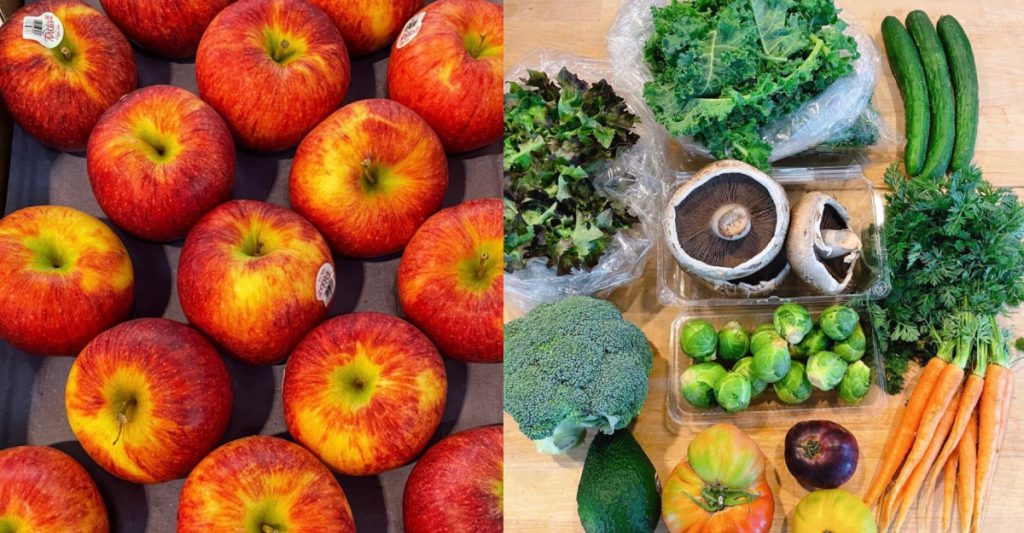
Following the closure of UglyFood, Augustine reflected on what he could’ve done differently if he could start UglyFood over again. This was when he arrived at a realisation that seeking strategic partners who possessed expertise in areas where he and the UglyFood team lacked proficiency could make the business journey smoother.
Recognising that such partnerships could provide a streamlined pipeline for business growth, Augustine actively pursued these collaborations, ultimately deciding to continue growing UglyFood rather than shutting it down. The 28-year-old founder declined to name these strategic investors, but expressed that this choice was what paved the way for the relaunch of the venture.
According to Augustine, he also received valuable encouragement from UglyFood’s suppliers. These suppliers recognised the positive impact that UglyFood was making in the sustainable food space, further fuelling his determination to forge ahead with the relaunch of the business.
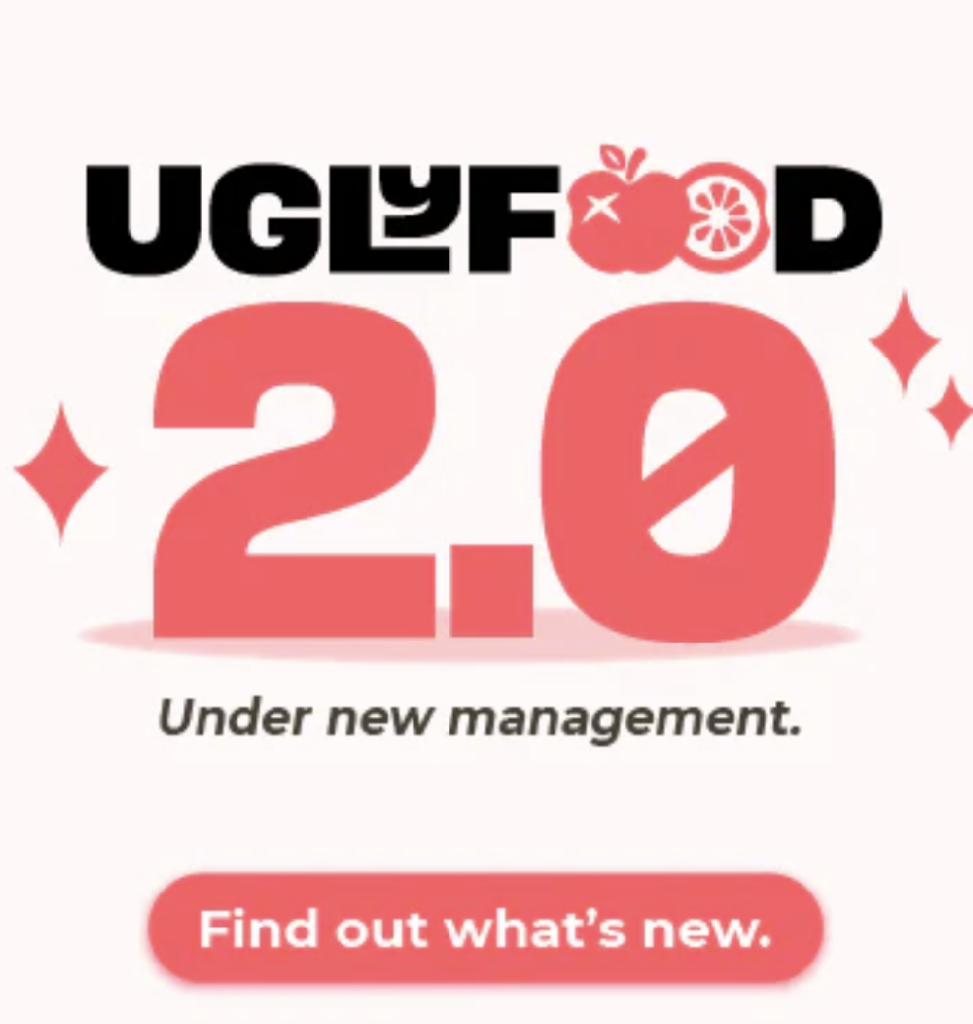
On March 10, UglyFood announced its comeback “under a new management”. According to Augustine, the company is now solely led by him, after the departure of Sean who left to “pursue other opportunities and revaluate his options”.
Following its relaunch, the company underwent a substantial downsizing process, reducing its team from 26 employees. Despite the significant reduction, Augustine maintains a positive perspective, viewing this downsizing as a favourable development. He emphasises that with this newly streamlined team, UglyFood has the opportunity to enhance its business efficiency and operational effectiveness.
“We want to have a slower progression [as compared to the previous iteration of UglyFood], hence, we are a lot smaller this time round. We’re hiring people to fill up roles that are essential for overall growth,” he added.
What’s different this time round?
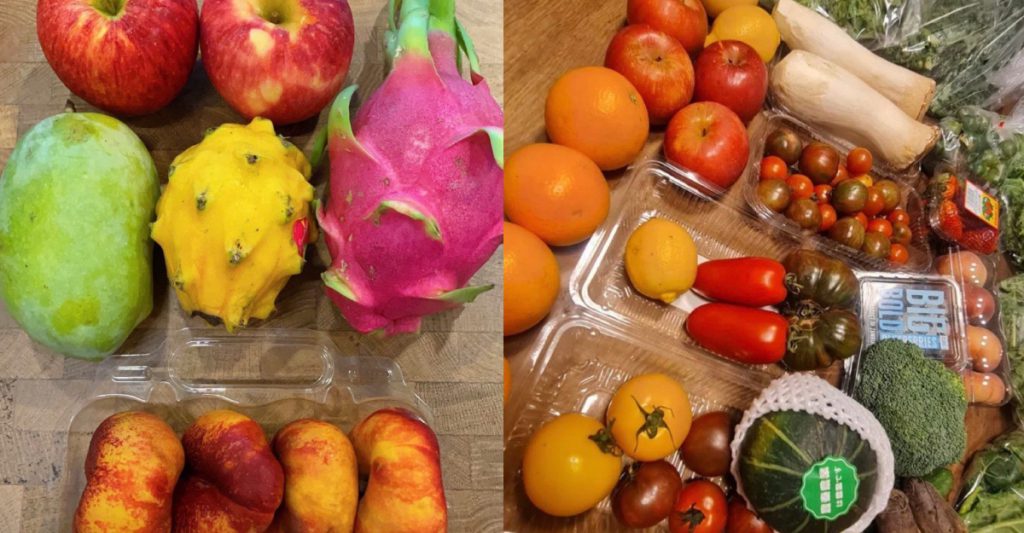
With the relaunch, UglyFood has made significant improvements to its logistics and backend systems.
One noteworthy improvement is the adoption of cold chain logistics, which enables the company to establish a meticulously controlled supply chain. This includes refrigerated facilities for the production, storage, and distribution of its produce, ensuring optimal freshness.
Prior to this, UglyFood relied on ice boxes for deliveries, which had a limited shelf life of merely four hours.
Furthermore, the company has streamlined its procurement processes by directly sourcing produce from farms. These optimisation measures result in cost savings for the startup, which can be passed onto its consumers.
Meanwhile, in terms of rebuilding their consumer base, Augustine shares that UglyFood’s customers have been “very, very supportive” so far. Its large social media following have made these efforts easier.
“It’s just a matter of retargeting the people who have been buying from us, just re-announcing and making it known that we’re back,” he explained.
For now, UglyFood is solely focused on its core offerings — ‘ugly’, or imperfect fruits and vegetables. Down the line, it is looking to restore its original range of offerings, which include other produce such as seafood, meat and poultry, as well as dairy.
All in all, UglyFood wants to stay true to its initial goal in promoting food sustainability.
We want to divert any and all sorts of food waste that could have been saved to appropriate parties. That always has been the goal, and will always remain as the number one goal for UglyFood.
– Augustine Tan, founder of UglyFood
Featured Image Credit: Augustine Tan / UglyFood
Also Read: This 27-year-old S’porean built a grocery startup that sells “ugly” produce at up to 60% off
Genshin Impact launches its 1st international tourney, regional finals to be held in M’sia

Buckle up Travellers, Genshin Impact has announced its first official international tournament series in 2023, and it’s for its strategic card game mode, Genius Invokation TCG.
Called “Astra Carnival: The Prince Cup”, the tournament will formally open in the Southeast Asia/Hong Kong/Macao/Taiwan (SEA/HK/MO/TW) region this August.
Genius Invokation TCG is a trading card game (which is what TCG stands for) where you can battle other characters in the game or fellow players.
While Genius Invokation TCG might not be the favourite game mode of some players, the total cash prize of US$37,000 for our region might have you thinking twice. (The global prize pool is US$270,000.)
Here’s how to participate
For the regional tournament, Genshin Impact will be inviting 32 contenders from the Cat’s Tail Gathering S3 and Wild Card to partake in online qualification matches.

Authorised by HoYoverse, Cat’s Tail Gathering is a Genius Invokation TCG competition that the Genshin Impact Tavern community has been hosting.
During the week-long qualifiers, participants will match with other contenders. Winners will accumulate points over the course of the competition, and the top 16 will enter the elimination tournament to compete for the championship and the grand prizes.
Cat’s Tail Gathering S3 will be open for registration on July 10.
Those who miss out on the Cat’s Tail Gathering will be able to partake in the Wild Card event, which will be open for registration for players in the SEA/HK/MO/TW region on August 26.
To be specific, 24 players will be chosen from the Cat’s Tail Gathering S3, while 8 will be chosen from Wild Card. These numbers are considered variables though, as they might change in accordance with whether Cat’s Tail Gathering S3 contenders actually want to participate in Astra Carnival: The Prince Cup.
To stay tuned for the following steps or updates on the tourney, players can join the Genshin Impact Tavern Discord group. There are currently no registration forms or the like yet, at the time of writing.
This regional competition is only open to players on the Asia server, so if you’re playing on a different one, be sure to check the correct dates for your respective server. You’ll also need to be present in SEA/HK/MO/TW during the duration of the tournament.
It will be coming to Malaysia
The 32 contenders who are selected for the qualifier matches will be notified via Discord.
After the qualifiers, the best eight players will be invited to participate in the offline championship matches which will be hosted in our very own home country of Malaysia.
The matches will be broadcasted live on the official Astra Carnival Twitter, YouTube, Twitch, and TikTok channels.
The finals for our region are slated to happen on September 17, 2023, a Sunday.
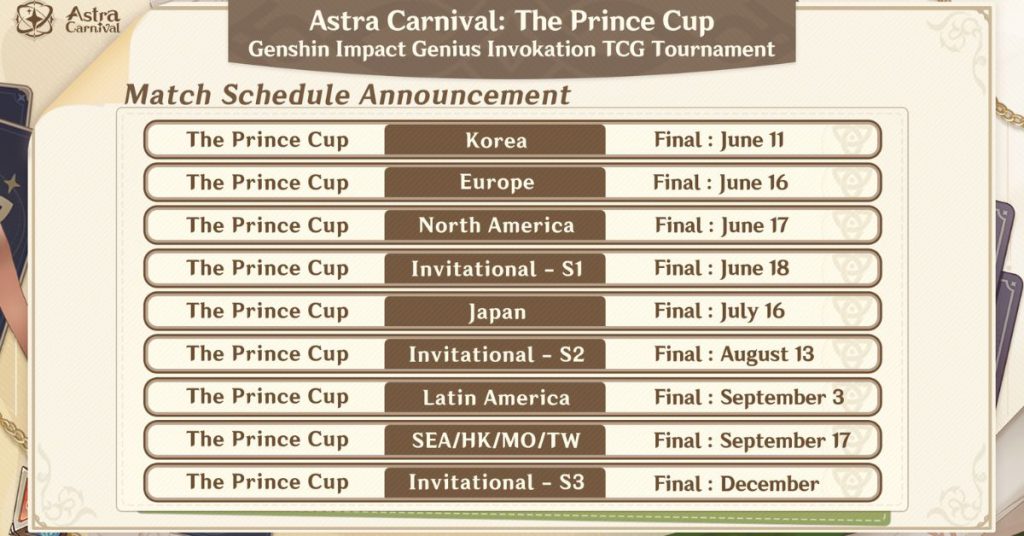
All travel expenses incurred by the participants heading to the offline tournament will be covered by the official Genshin Impact team.
The team hasn’t clarified what amount the ultimate champion will be walking away with, whether it’ll be the entirety of the US$37,000 prize pool or just a slice of it.
In any case, we’re sure you’ll have quite a chunk of money to spend on some Primogems.
Other than the prizes, top regional candidates as well as top community tournament candidates may also get invited to the invitationals and take part in exhibition games for the international audience.
Due to game mechanics-related restrictions, though, Genshin Impact is unable to provide cross-server support, so until some kind of workaround is found, we won’t be seeing a truly international tournament that’s open for all.
Nonetheless, this is certainly a big affair for the overall Genshin Impact community, and who knows, you might just see us in the arena.
- Learn more about Genshin Impact’s Astra Carnival: The Prince Cup here.
- Read other articles we’ve written about gaming here.
Also Read: Role-play as Friends characters & gossip over endless coffee at this coworking pop-up in KL
Featured Image Credit: Genshin Impact
7 things that prove why Khairul Aming deserves his success as an influencer & entrepreneur
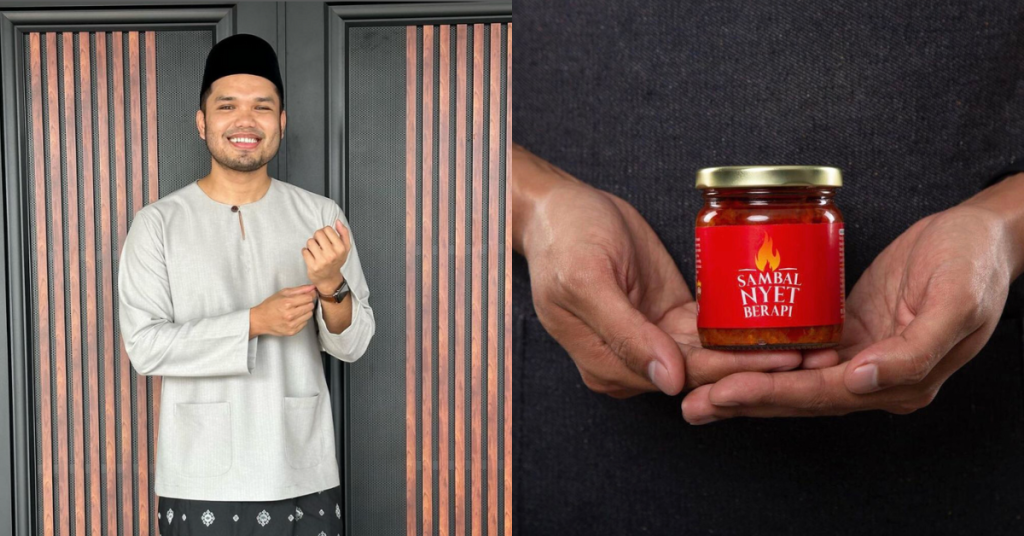
As a country that prides itself on our food, there are naturally plenty of F&B content creators around. They could be pages dedicated to finding the best eateries, or everyday Malaysians sharing recipes.
But none have surprisingly reached the heights of Khairul Amin Kamarulzaman, better known as Khairul Aming. We saw his super supportive fanbase for ourselves when we posted this article on why some influencer brands in Malaysia make it, while others don’t.

Which begs the question— what makes him so popular? Are his cooking videos just that good?
Based on what we can observe, we found seven reasons why Khairul Aming has become one of Malaysia’s best-known food content creators. But first…
Let’s start at the beginning
A Kota Bahru native, Khairul Aming’s name is synonymous with his viral Ramadhan cooking series, entitled “30 Hari 30 Resepi”.
In 2018, he began uploading new cooking videos every day throughout the fasting month. It began as a quirky way of sharing his recipes, but who knew that it would turn into something much bigger?
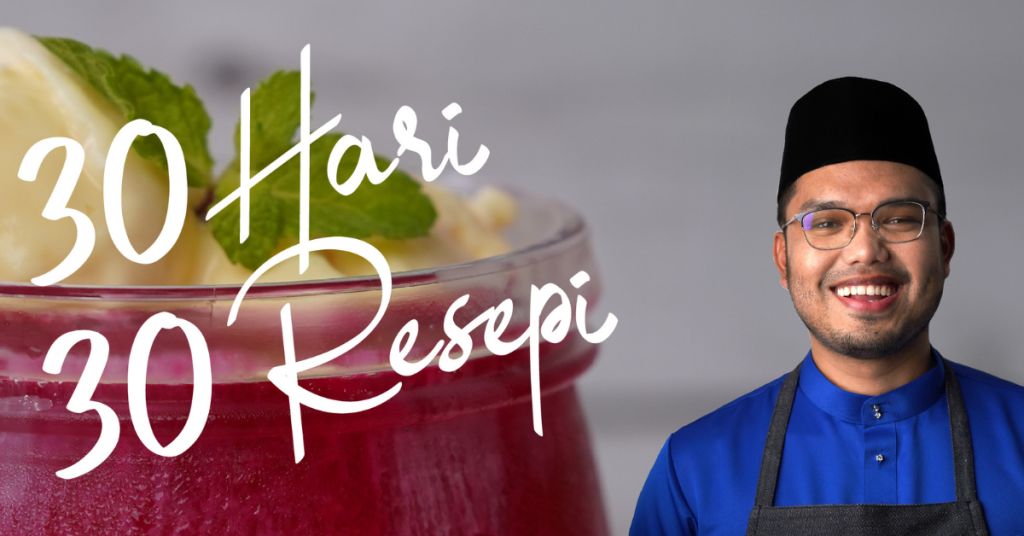
From only around 800 Instagram followers at the time, Khairul Aming has steadily grown to over 3.7 million followers in six years.
Some might say it’s a stroke of luck, but most entrepreneurs will agree that this is only one factor. In the grand scheme of things, being strategic and flexible when needed is what makes one successful.
This brings us to our very first point.
1. His marketing feels genuine & aligns with his niche
As with most influencers, Khairul Aming decided to also use his platform to conduct business.
The success of his Ramadhan series drove him to try his hand at selling what’s now a famous condiment in the local Malay community—Sambal Nyet. The product has since made over RM21.5 million in sales following its launch two years ago.
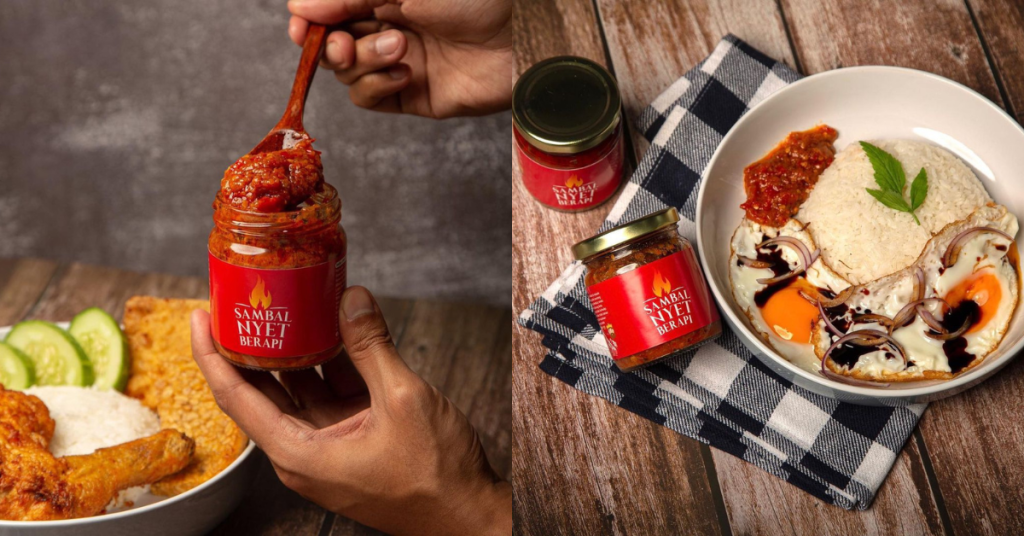
It’s not an entirely unique product as various other local brands have come up with similar items. But by fusing his product with what he’s known for, Khairul Aming manages to seamlessly advertise his product to fans.
It can be as simple as him using it in a cooking video for chili oil-fried eggs or a variation of instant noodles. This ensures that his followers don’t feel like they’re simply pushed a subpar product with no idea how to actually use it, which in turn, helps to build and maintain trust in his product.
2. He’s open to criticism & acknowledges his faults
As an influencer, everything you post is subject to the criticism of people online. Even when it’s constructive, navigating them isn’t the easiest.
Some influencers may become very defensive, while others calmly address criticism. Khairul Aming has shown that he is of the latter.
For example, he was recently called out by a medical doctor for the amount of cooking oil used in his videos. In response, Khairul Aming appeared to take it in his stride and accepted the feedback while explaining his perspective on the issue.
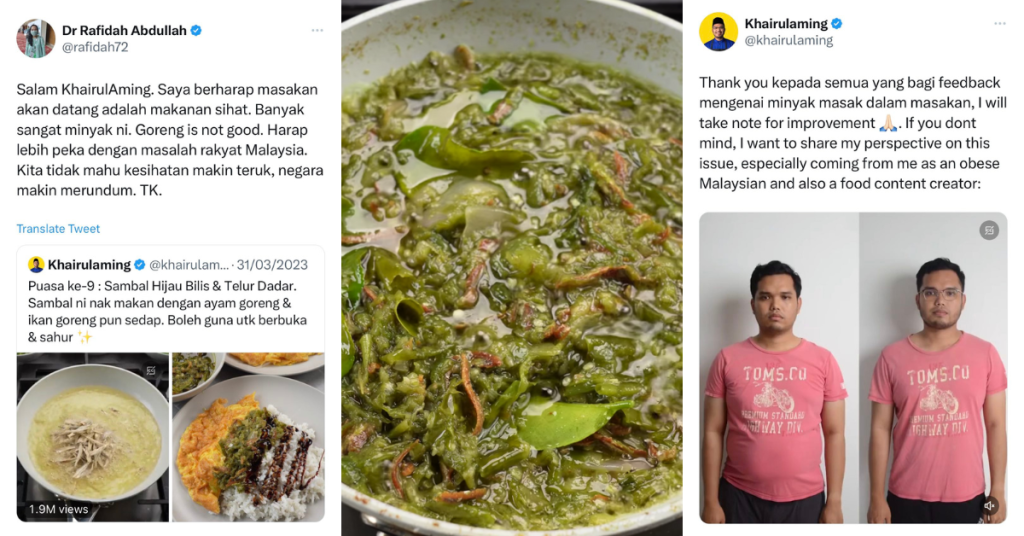
After overcoming his obesity, he found a balance between consuming tasty food while maintaining healthy portions, and with that recipe, wanted to show what it would really take to create something delicious.
So, while it might not be the healthiest recipe out there, he pointed out that people still had the decision to follow his recipe, or tweak it to be healthier for themselves.
This tactful response further earned him the respect of his supporters, and reassured them that he had their best interests at heart.
3. He doesn’t easily give up on his goals
Before launching his namesake brand, Khairul Aming was working in the logistics industry.
He tried various side gigs like selling homecooked meals, clothes, and resume templates to earn some extra income. But none of them took off.
So he decided to make cooking videos instead, on his first food channel on Facebook called Rasapop. He later developed an earlier version of Sambal Nyet and tried leveraging his platform to sell it. But for some reason, that later plummeted too.
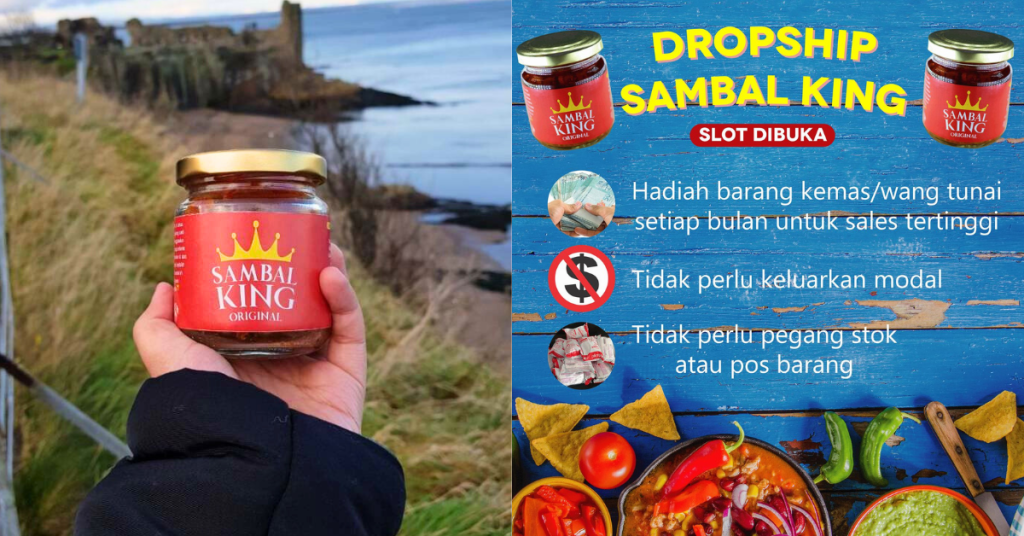
Driven to achieve this goal, though, Khairul Aming tried again once his new brand was stable.
This perseverance and willingness to try again served as an inspiration for many of his followers. It also showcased how Khairul Aming isn’t just chasing fast money, but that he has a goal and continuously strives to reach it, leveraging his resources appropriately.
4. He defies typically negative influencer stereotypes
Another interesting factor that contributes to his popularity is the way he presents himself online.
In contrast to the stereotype of showoff local influencers, Khairul Aming prefers to stay humble despite his level of fame and success.
You won’t find posts of him flaunting his wealth to the masses. In fact, he even surprised netizens by sharing that he drives a Perodua Bezza.

Instead, his page remains focused on his cooking content.
Meanwhile, the internet personality also seems to be free of any major controversies. Just a quick Google search will show how drama-free he is, which is quite a rarity considering how long he has been in the scene.
5. He’s got an approachable online personality
Scroll through Khairul Aming’s Twitter and you’ll see that he’s quite an open character.
The influencer presents himself as a relatable and approachable person by posting simple everyday updates about his life, and doesn’t hesitate to interact with his community on the regular.
The way he interacts with others online also remains unpretentious, and most times, it feels like you’re observing just another person with his circle of friends.
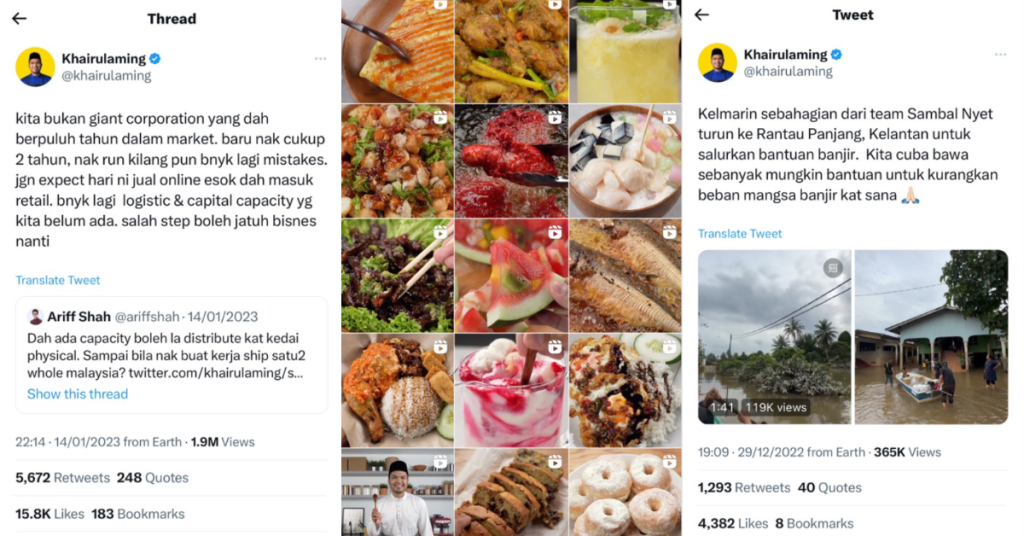
6. He doesn’t remain stagnant & refines his craft
As someone who has been following the content creator for a few years, I’ve noticed that Khairul Aming’s work remains reliably consistent.
If you’re looking for easy-to-follow recipes using common household ingredients, he’s your guy. And along with his rise in popularity, his content also continually improves with time.
A simple comparison between his old Rasapop videos and his latest cooking videos shows a stark contrast in quality.

This commitment to improving his craft and sharing his best work with his audience proves to them that he wants to keep putting out his best work for their benefit. Clearly, that dedication has paid off, and he’s able to share his success as…
7. He takes good care of his employees
While employee benefits are not a new concept, it’s interesting to see how this young entrepreneur runs his SME.
Last year, Khairul Aming shut down the Sambal Nyet factory and brought all 60 of his staff members to go Raya shopping. Along with that was a company buka puasa dinner at an undisclosed hotel, and later a 4D3N company trip to Genting Highlands.

This routine continued this year, when the entrepreneur brought his team for a vacation in Langkawi. Employees were also given shopping allowances and the opportunity to take part in water-based activities.
The care he’s shown further creates an impressionable image of the brand and its founder, and is something that will stick with many people.
-//-
All this isn’t to say that Khairul Aming is one of the best influencers out there. We’re all human and bound to make mistakes from time to time, which is where constructive feedback comes in.
But so far, he seems to be doing things right, particularly by how he steers clear of controversies, similar to how VFX creator Sofyank carries himself online as well.
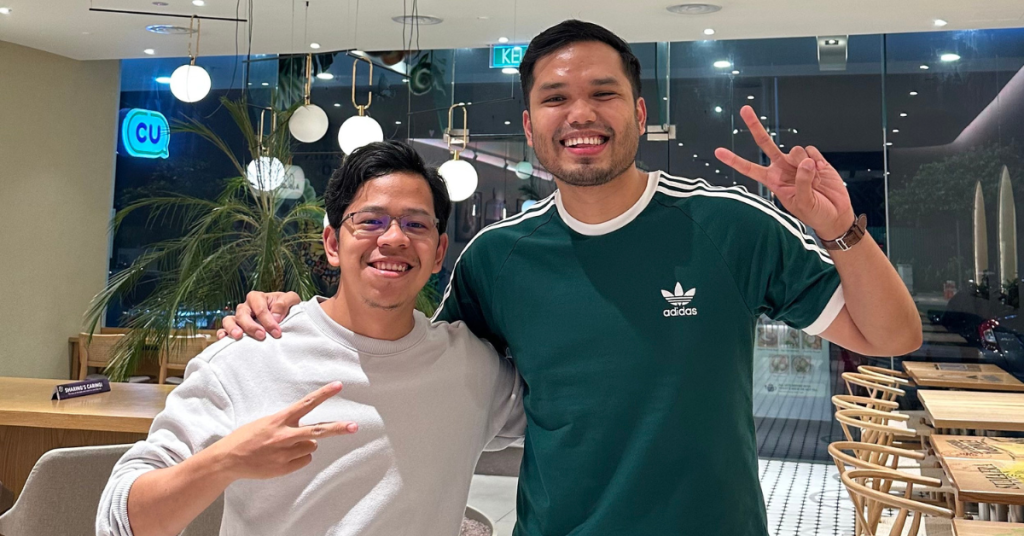
- Read other articles we’ve written about Malaysian entrepreneurs here.
Also Read: When not cooking at a Michelin-starred spot, this M’sian is designing Japanese chef knives
Featured Image Credit: Khairul Aming
Proving there’s a market for art in M’sia, these artists opened a self-funded store in SS2
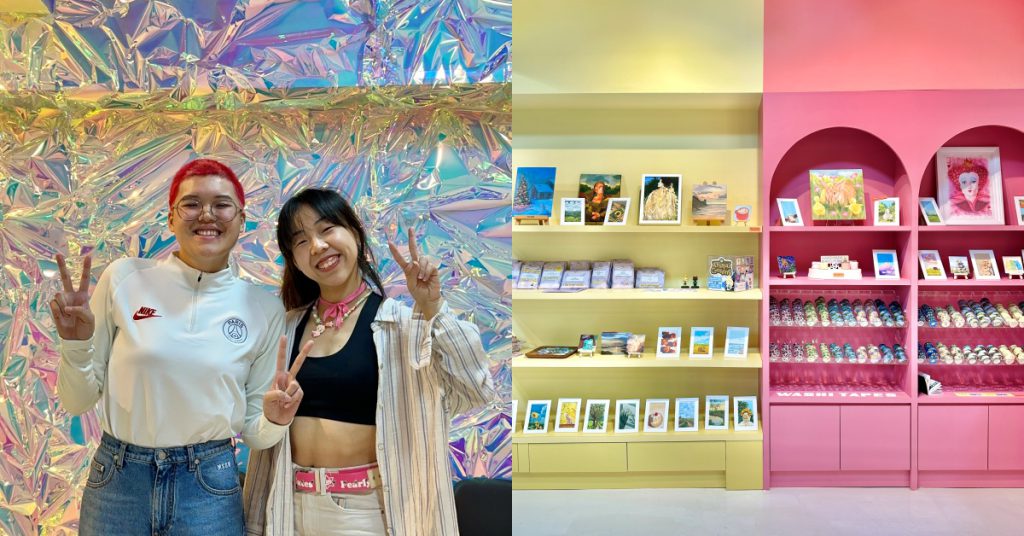
Despite the growing appreciation for art, a lot of older folk still don’t believe in it as a sustainable career path. Hence why the stereotype of the starving artist persists.
But a lot of Malaysian artists we’ve spoken to have in fact been able to make a living from creating art, whether it’s through designing stickers or other media.
You’ll commonly find these artists on online sites like Buttermilk, virtual marketplaces, pop-up booths, or in stationery stores like Stickerrific. These allow them to sell their art without too many overhead costs, among other benefits.
High school classmates and artists Mel and Yew dreamt differently though. The 23-year-olds behind Mewmovement knew that they wanted a physical store for their artistic endeavours down the road, and two years after selling online, they made it happen.
Drawing up the vision
Speaking to Vulcan Post, the duo shared that they’ve been running Mewmovement since March 2021.
Mel had previously studied a degree in interior architecture design whilst Yew had taken a diploma in animation but had dropped out halfway through as it wasn’t really what she wanted to pursue in the future.
Originally high school classmates, they continued to stay in touch years afterward, partly for their shared love of art.

“We have both loved art and had been drawing, doodling, and painting since we were kids. We both always wanted to be an artist for the longest time, and have wanted to turn it into a career rather than just a hobby.”
Yet, the pair shared that at first, they couldn’t really decide on what type of business they wanted to start.
Yew was already selling handmade stickers on her own social media accounts at the time and Mel wanted to start a small business. In the end, it came back to their shared passion.
“Both of us love art so we decided to sell art. We also noticed there weren’t many fine artists that start a small business as most fine artists would go to an art gallery to sell their art,” they said.
This was the start of Mewmovement, which launched with a startup capital of RM10,000. Their very first painting that they did together was called “Alpaffe”, an alpaca and giraffe, which they said symbolises the two of them.
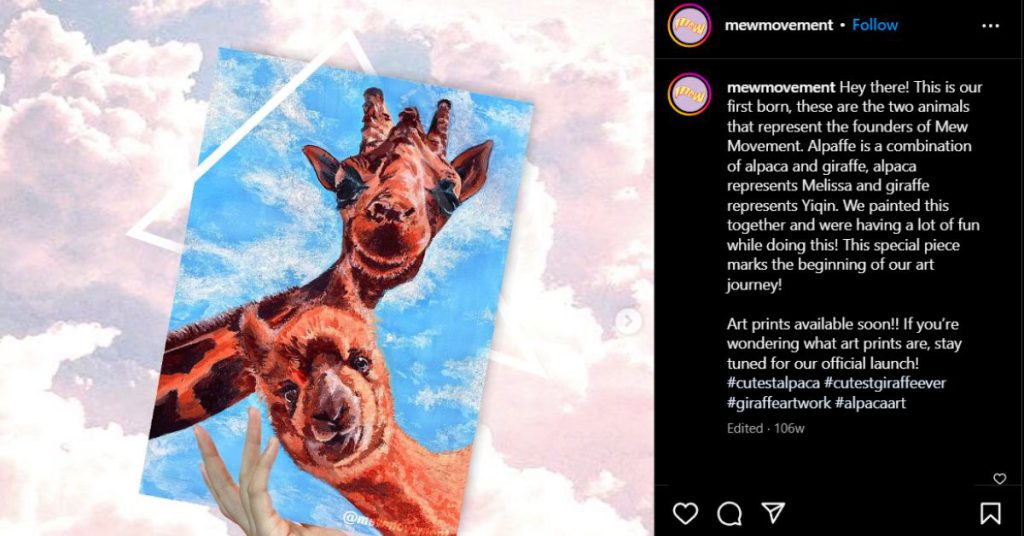
They sell various products such as stickers, sticker sheets, postcards, washi tapes, art prints, original paintings, cards, enamel pins, t-shirts, tote bags, mirrors, blind bags, and more, all designed and drawn by them both.
Colouring in the gaps
The pair said that opening up a physical store has always been their aim and had been on their business’ bucket list.
“We wanted to create a space that is all about art, like a combination of an aesthetic cafe and an art gallery. We want to attract more people that love art, and we hope we can inspire them to be creative.”
It would take time before they could bring their store to fruition though, and they bided their time by selling online and at booths in various events. Two years later, their opportunity came.
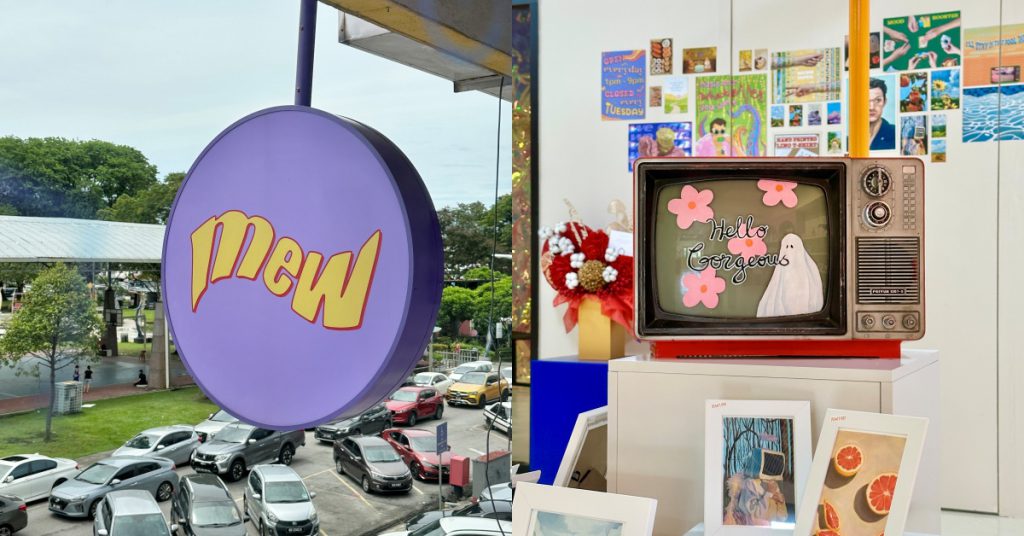
With the savings they made from the online store and extra capital they added themselves, they finally managed to open up their physical store in SS2, Petaling Jaya which was launched in May of this year.
The whole preparation for the store took around six months, from finding the right shop, designing the space and renovation, and coming up with more products.
Apart from also selling the products they offer online, their store comes with cool and innovative sections such as a PhotoBooth where instead of the traditional cameras, Yew does live drawings in 15 minutes for RM15.
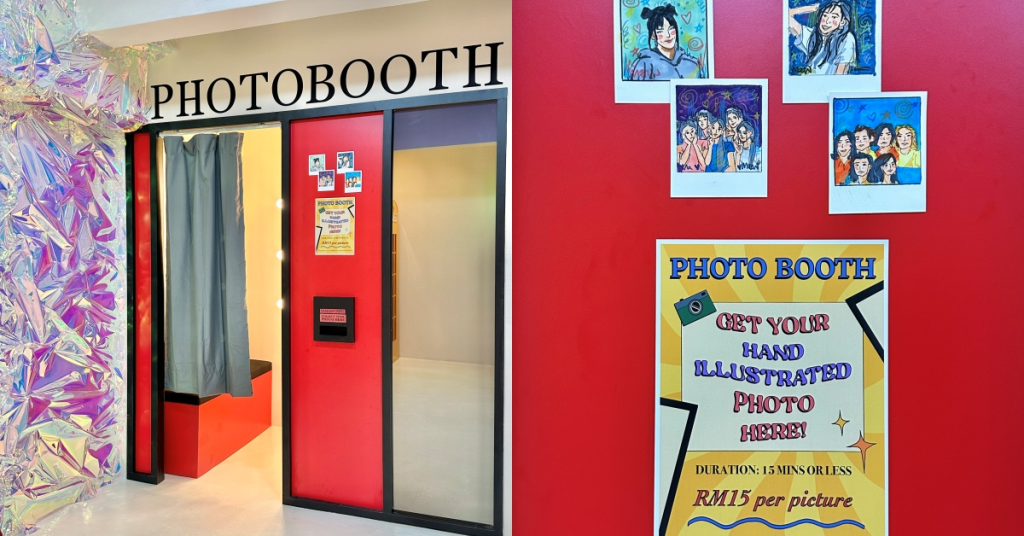
They also have a space in the store called “Mewracle”, which changes themes every month, and can act as an event space, art gallery, workshop, or interactive art space.
Another section they have that has gone viral is their wall of 12 red letterboxes. Each one has been labelled with a month, and you can mail a postcard that was created by them to your future self, or friends in the future for RM6.
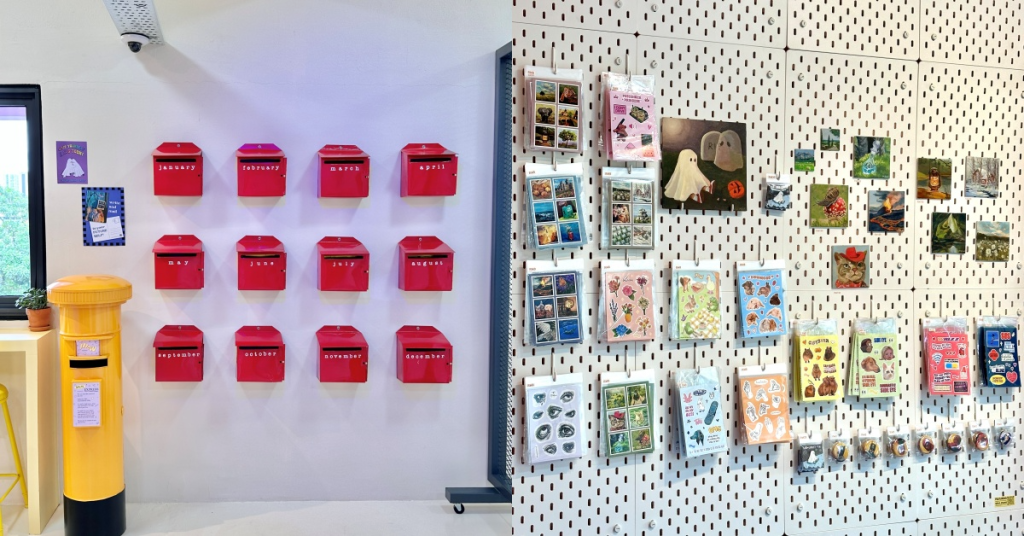
To the drawing board
Currently, they’re hands-on with running Mewmovement, and they take turns with everything from creating the products to manning the store and handling finances and renovations.
“We are hoping to expand our team, but we will do that when the business is more stable and when we really know how things work.”
“The biggest challenge so far would be doing everything by ourselves, there’s a lot of things we don’t know when it comes to owning a physical store, and at the same time we need to keep coming up with new artworks,” they added.
Although the pair admitted that they are in a very niche market, they feel quite confident in sustaining the store due to the amount of interest that they have generated from the public.
On their plans for the future, Mel and Yew shared that in the short term, they wish to come up with more products so that they can attract different types of customers.
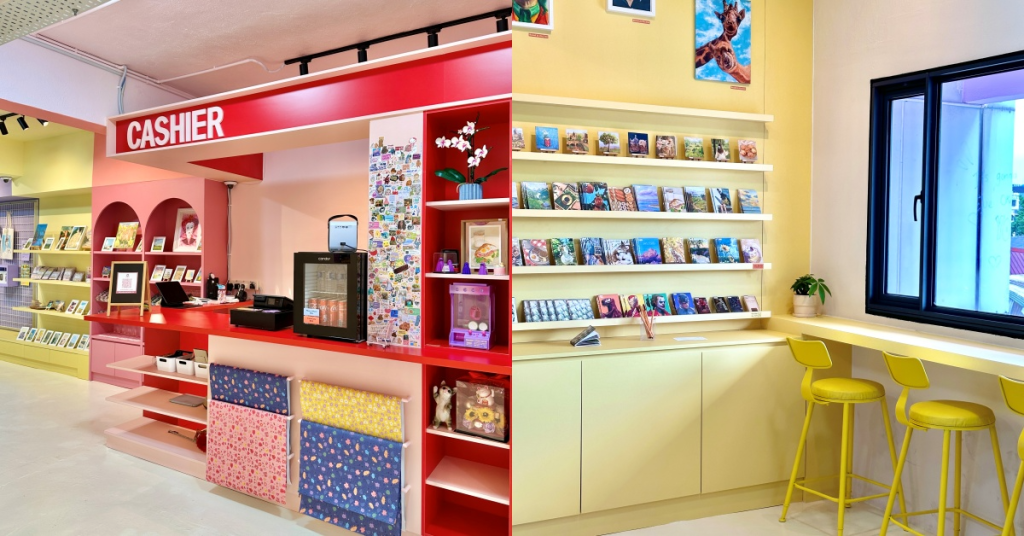
“We will have events and workshops in the future to attract more customers as well as return customers and try to come out with more products. We also plan to start a membership programme that gives out exclusive items along with the package.”
Meanwhile, in the long term, they hope to recruit and train young artists to start their own art shop or build their portfolio.
“We hope to guide them through their art journey. We also want to open branches in different areas, and have different interior designs so that it’s a different experience at different stores, and maybe even in a different country.”
From what we’re hearing, the two ambitious artists certainly have their plans laid out, and, just like how they opened their store as envisioned, it might only be a matter of time before we see their other goals come to life.
Also Read: This M’sian brand has sustained itself with just one fizzy honey beverage for 6 years
Featured Image Credit: Mewmovement
Buying real estate for S$1: Why tokenisation is the key to financial inclusion
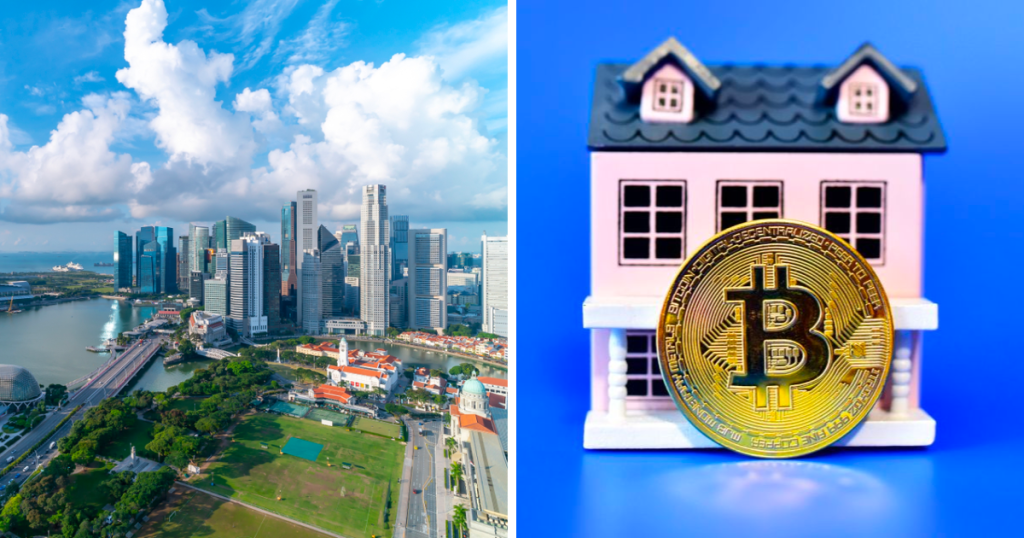
Since its emergence, blockchain technology has preached a vision of financial inclusion — a way to reduce inequalities and barriers to entry. During this time, cryptocurrencies such as Bitcoin and Ethereum have become popular alternative investments, with market caps exceeding hundreds of billions of dollars.
That said, they haven’t quite lived up to the mandate. While they’re readily accessible, cryptocurrencies have proven time and time again that they aren’t safe investments. Today, the crypto market remains incredibly volatile and demands a high risk tolerance. Stable returns have been hard to find even through dedicated funds and staking protocols.
In reality, financial inclusion doesn’t require the creation of new assets – what’s more important is enabling access to existing ones. This is where tokenisation comes in.
How does tokenisation work?
Tokenisation is a method of representing real-world assets in the form of digital tokens. These tokens can be made freely investable, allowing holders to share in profits and ownership of the underlying assets.
For example, an apartment – worth S$1 million – could be represented by a million tokens of S$1 each. Holders of these tokens would be able to share in any rental income generated by the apartment. If the value of real estate were to appreciate in the future, this would also be reflected by an increase in the token prices.
Normally, access to real estate would be limited to those who could afford to buy the entire apartment. However, through tokens, the entry price can be made a lot lower. This opens up a relatively safe investment opportunity to many who’d usually be excluded from it.
Beyond finance, tokenisation can help overcome geographical barriers as well. In countries with a volatile economy, it can be tough for locals to grow their wealth. Local currencies are often subject to drastic fluctuations and can lose their value rapidly. Tokenisation offers access to safer investments which can be found elsewhere in the world.
Access to the world’s safest assets
US Treasury Bills are considered to be one of the safest investments in the world, offering yields of over five per cent at present. They are short-term debt securities issued by the US government and outside of black swan events – such as the recent debt ceiling crisis – they tend to be risk-free.
Earlier in April, Singapore-based startup Open Eden launched a smart-contract vault offering access to TBILL tokens, which are backed by US Treasury Bills. The vault is managed by a financial institution regulated by the Monetary Authority of Singapore (MAS).
Currently, OpenEden only allows professional investors on its platform — but it still serves as an example of how tokenisation is changing the world of finance.
It allows investors 24/7 access to Treasury Bills, otherwise limited to US trading hours. In addition, any settlement take place immediately and trades can be made at any time.
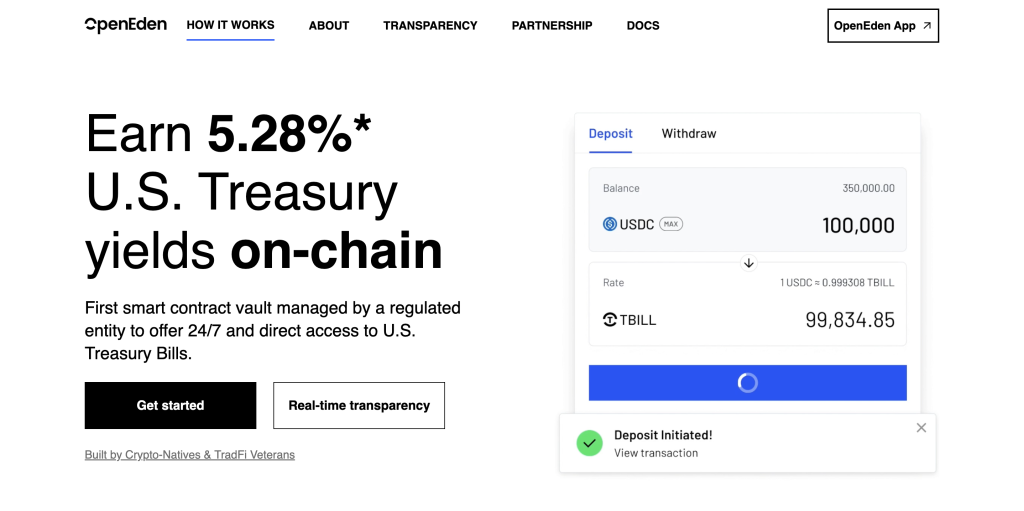
OpenEden was founded to address a growing demand in crypto for low-risk, liquid, and transparent assets. As the industry matures and hopes to attract more institutional investment, such projects could be a key driving force.
Along with making transactions more efficient, TBILL tokens could unlock trillions of dollars in value. “There is around US$130 billion worth of stablecoins sitting on the sidelines and not generating any meaningful yield,” OpenEden co-founder Jeremy Ng comments on the current state of the crypto market.
In traditional finance, bear markets don’t demand investors to hold cash. Precious metals, bonds, and other securities offer promising alternatives during the downturn. Tokenisation is helping bring such opportunities to crypto as well. Investors no longer need to park their money in stablecoins while waiting for Bitcoin to push for all-time-highs again.
In the form of tokens, assets can easily be used as collateral too. This would allow investors to gain access to liquidity without having to give up their investments.
The future of tokenisation
As the trend picks up, more and more businesses are looking into use-cases for tokenisation.
In April, Tyrone Lobban, head of JPMorgan’s Onyx, told Coindesk that tokenisation would be a killer app for traditional finance. The company is pushing forward with its efforts to tokenise real-world assets including bonds and mutual funds.
Real estate token offerings are becoming more common as well. For example, CoFund tokenised a US$10 million resort in Bali this April, with minimum investments starting at US$1,000. The company projects an annual return over 10 per cent for investors resulting from rental yield and an increase in property value.

Other assets which could benefit from being tokenised include carbon credits and commodities. OCBC and MVGX are exploring the former, with a partnership announced last year to develop green financing products around such tokens.
As for the latter, Argentinian startup Agrotoken enables the tokenisation of grains such as wheat and corn. Producers can tokenise their harvest online and subsequently use the tokens as collateral or trade them for currency. Spanish bank Santander has been working with Agrotoken on developing loans secured by such tokens.
Although it’s been a meandering road, the blockchain vision of financial inclusion is finally picking up steam.
Featured Image Credit: Built In
Also Read: What the US’ crackdown on crypto means for Singapore and the rest of Asia
Singapore attracted S$140 billion from abroad thanks to its successful handling of COVID-19
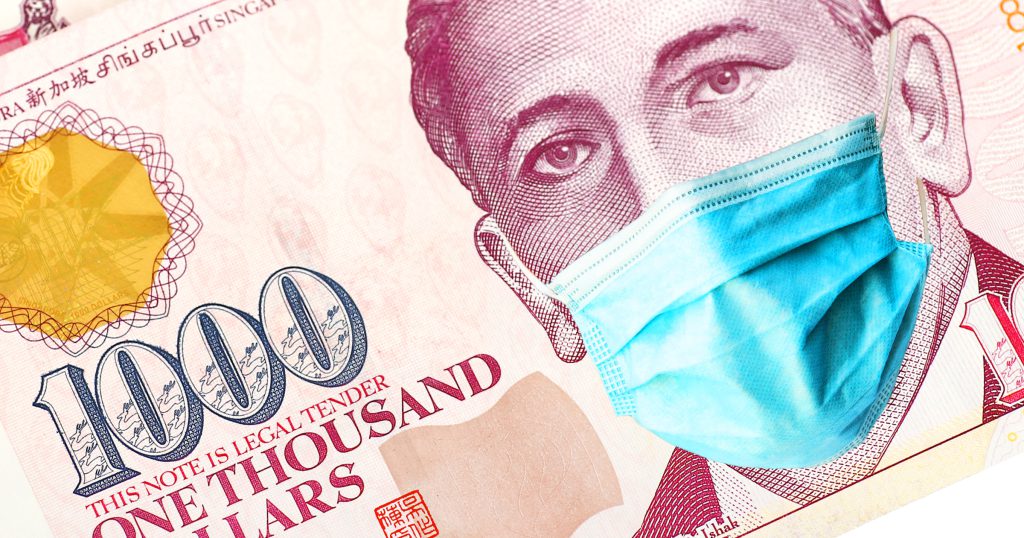
Disclaimer: Opinions expressed below belong solely to the author.
It’s usually difficult to quantify trust. We all know it’s good to be trusted and it makes other people more likely to engage with you — whether as an individual, organisation or an entire country.
Sure, a trustworthy nation typically sees more investment, better employment opportunities, higher wages and so on. But it’s hard to dissect the exact impact trustworthiness has on any specific area, since it is something that is acquired over years — and its benefits are, similarly, accumulated over long periods of time.
However, the extreme jolt that the global pandemic shook the world with over the past three years, revealed just how dependable Singapore is in the eyes of global investors — and, uniquely, allowed us to quantify the scale of their trust in dollars.
Safe haven
Singapore is well-known for its port facilities — a crucial node in global trade — but it’s an even more impressive (and safe) harbour for money, attracting billions of dollars in foreign investment each year.
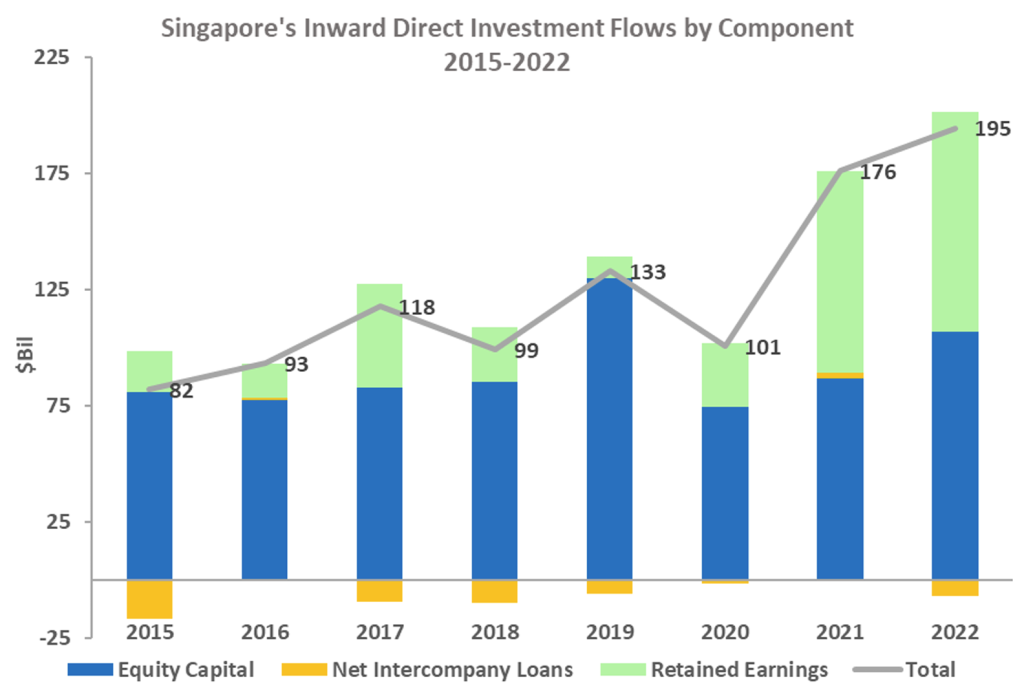
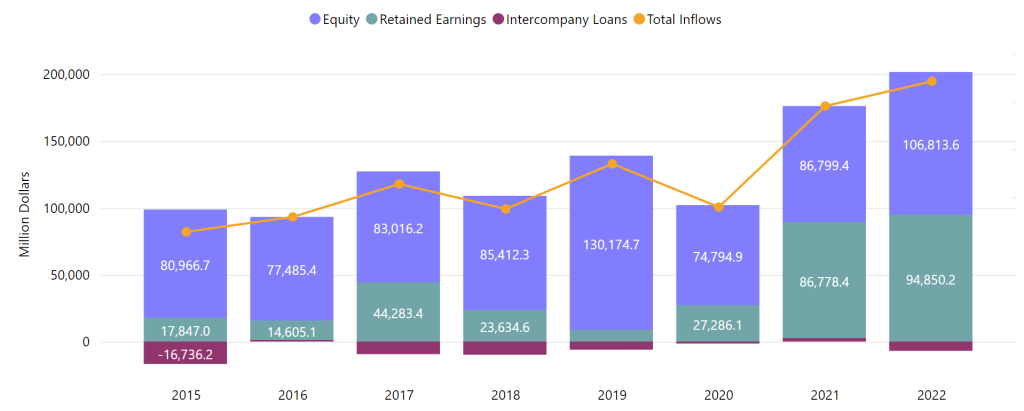
Net inward direct investment flows into Singapore before the pandemic reached around S$100 billion annually, with considerable swings in each respective year (between S$82 and S$133 billion).
In 2022, however, they soared to S$195 billion, beating the previous record of S$176 billion in 2021 — in both cases, boosted by earnings retained in the city-state (in green).
While prior to Covid-19, foreign investors typically left behind an average of S$20 billion in earnings per year, over the past two years it was a whopping S$90 billion — for a total of over S$180 billion, or S$140 billion over what could reasonably have been expected in normal circumstances.
As it turns out, amid the global uncertainty caused by the pandemic, coupled with subsequent economic crisis, soaring inflation, Russian invasion of Ukraine and Beijing’s tightening grip on Hong Kong, Singapore is a peaceful oasis to keep your money safe in.
So safe, in fact, that repatriation of funds back to whichever country a particular company came from was, clearly, is considered less attractive than usual.
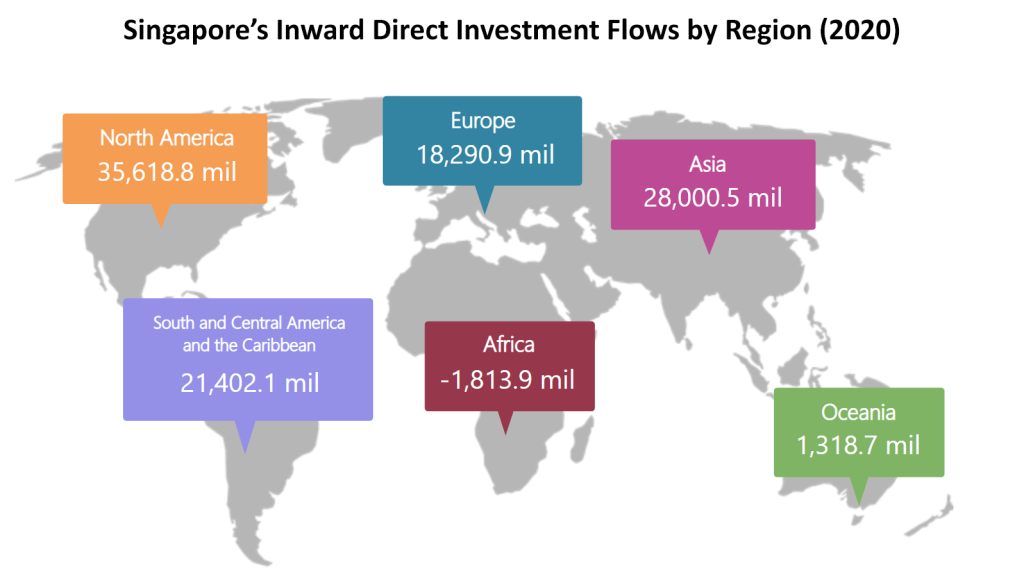
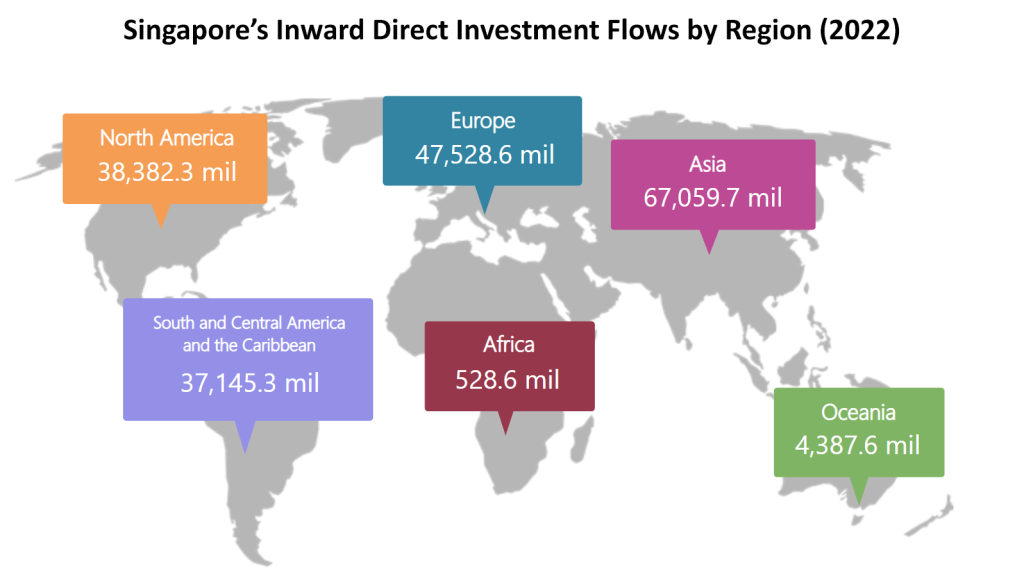
Singapore recorded a boost in investment flows from all regions except North America, likely because the USD is considered a crisis-proof currency.
In Asia, however, nobody can really trump SGD, which has steadily held its value against every other competitor — and local government is likely held in higher regard than all others in the region, even by foreigners.
Why move your money outside of the only place on the continent that can reasonably protect the worth of what you’ve earned?
Because Singapore expertly navigated the rough waters of the pandemic, avoided economic cratering, protected its currency and was one of the first nations to show how to live with Covid, its payoff was the massive haul left behind by foreign investors for both local investment (where applicable) as well as management by Singapore’s robust financial sector.
This has been amplified by the political turmoil in Hong Kong (coupled with unpredictable, prolonged lockdowns), Beijing’s crackdown on the rich elite and Xi Jinping’s geopolitical ambitions in Taiwan, which keep piling on the tensions with the West, sending regular tremors across East Asia.
Where else can the money go for cover in this part of the world?
Of course, the city-state has long had an excellent reputation but its decisive handling of the Covid crisis, both economically and medically — e.g. locking down when necessary and reopening once vaccination milestones were hit (using the best available treatments) without the blowback experienced e.g. in Hong Kong which resulted in thousands of unnecessary deaths there — served to further reassure foreign investors of Singapore’s dependability, at a time when everybody else was cracking under pressure.
Featured Image Credit: Depositphotos
Also Read: Singapore Airlines posts highest profit in 76-year history as COVID made it stronger than ever

